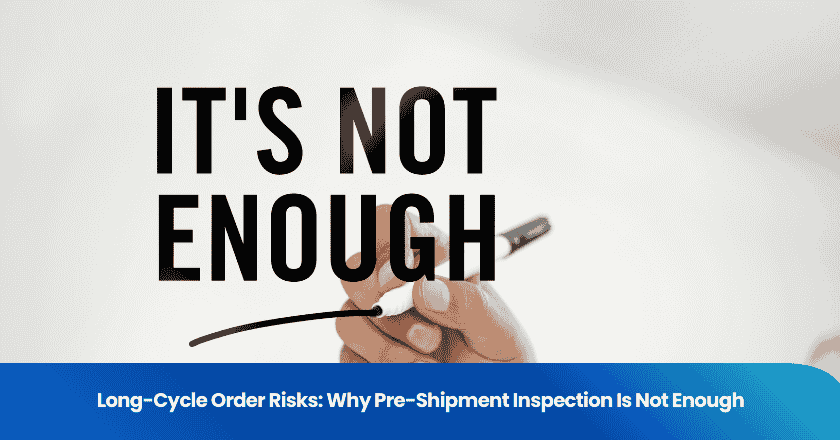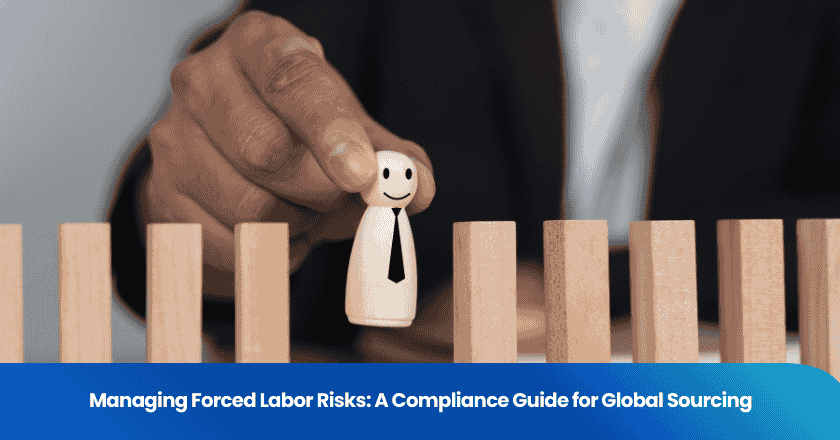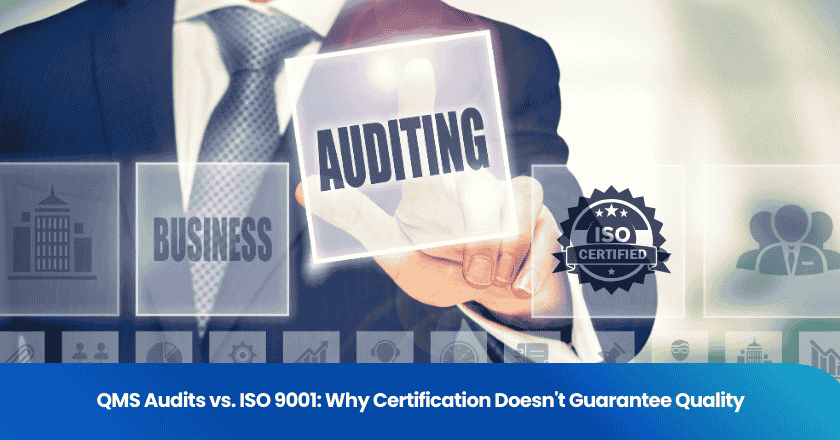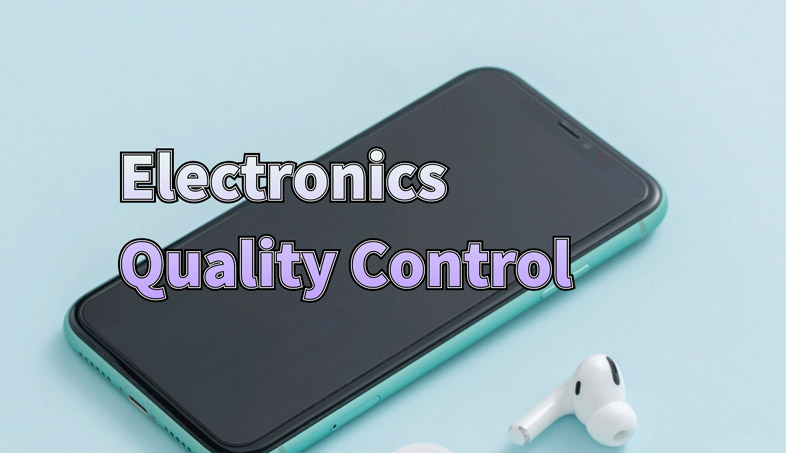
Quality control (QC) plays a pivotal role in the consumer electronics industry, which demands reliable products that meet customer expectations. Poor quality control can lead to non-compliant products, large-scale recalls, and damage to brand reputation. This article will explore common quality control issues in electronic manufacturing and provide practical solutions.
1. Component defects and material issues
During the product development and production process, non-conforming components and materials can potentially have a severe impact on product performance and lifespan at any time. These issues arise from multiple aspects, with the instability of supplier quality and inadequate material testing being the two primary root causes.
As providers of product components, suppliers' quality control capabilities directly impact the quality of the final product. Some suppliers may have various defects in their components due to poor management, outdated technology, or an imperfect quality control system. These defects may gradually emerge during product use, leading to performance degradation, frequent malfunctions, and even potential safety hazards.
On the other hand, inadequate material testing is also a significant cause of component defects. Before materials are purchased and stored, if they are not subjected to sufficient and rigorous testing, it becomes difficult to identify potential issues. Once these defective materials are used in product production, it may lead to inconsistent quality across the entire batch of products, potentially affecting the company's reputation and market competitiveness.
In response to the aforementioned issues, the following solutions are proposed:
In terms of supplier selection
We should establish long-term and stable cooperative relationships with suppliers with good records. These suppliers typically possess a comprehensive quality control system, advanced production technology, and extensive industry experience, enabling them to ensure the provision of high-quality components.
When selecting suppliers, we should fully consider their historical performance, customer evaluations, and quality management system certification to ensure that the selected suppliers meet our quality requirements.
In terms of material inspection
We should implement a rigorous incoming inspection procedure to conduct comprehensive and meticulous inspections on every batch of purchased materials. Through professional testing equipment and methods, we can detect defects and issues in the materials as early as possible, ensuring that only materials that meet quality requirements can enter the production process.
A comprehensive material traceability system should also be established to enable swift tracing back to the source in case of any issues, allowing timely measures to be taken for resolution.
Testing aspect
We should conduct regular quality testing to strictly control the key performance indicators of materials. Through scientific testing methods and means, we ensure that the materials meet the specification requirements and satisfy the needs of product design and production.
Attention should also be paid to the performance changes of materials during use, and the testing plan and standards should be adjusted in a timely manner to ensure the quality and stability of the product.
2. Inconsistent product performance
In the product lifecycle, the variability in product performance is an issue that cannot be overlooked. This variability can lead to high levels of customer dissatisfaction and may also result in an increase in return rates, negatively impacting the brand image and market competitiveness of the enterprise. Upon further investigation, inconsistencies in the manufacturing process and deficiencies in the testing phase are often identified as the two primary culprits contributing to this issue.
Inconsistencies in the manufacturing process can arise from multiple factors. Variations in the precision of production equipment, uneven skill levels among operators, and fluctuations in the production environment can all have subtle yet significant impacts on product performance. These subtle differences may not be apparent in individual products, but when a large number of products are aggregated together, they can result in noticeable performance inconsistencies, leading to customer dissatisfaction.
On the other hand, deficiencies in the testing process are also a significant factor contributing to variations in product performance. Without comprehensive and rigorous testing before products leave the factory, it is difficult to ensure that each product meets the established performance standards. Some potential issues may be overlooked and only discovered by customers during use, potentially leading to returns and complaints.
To address this issue, the following coping strategies are proposed:
In terms of standardized testing procedures
A standardized testing protocol covering all production stages needs to be formulated and strictly implemented.
The agreement should specify the testing content, testing methods, testing frequency, and testing standards for each production stage, ensuring that each product can only proceed to the next production phase after undergoing rigorous testing.
By implementing standardized testing procedures, uncertainties in the manufacturing process can be effectively reduced, thereby enhancing product consistency.
In terms of performance benchmarks
It is also necessary to establish clear performance benchmarks as guiding principles for product design and production.
The performance benchmark should be based on market demands, customer expectations, and industry standards, ensuring that all products have certain competitive advantages while meeting basic performance requirements.
Performance benchmarks should also be periodically reviewed and updated to adapt to market changes and technological advancements.
3. Assembly line error
In the manufacturing process of products, the assembly line serves as a crucial link in combining various components into a complete product. However, errors that occur during the assembly process, such as poor welding and incorrect component placement, often become the "culprit" responsible for product defects. These errors may affect the performance and service life of the product, and may also lead to customer dissatisfaction and product returns, dealing a blow to the reputation and economic benefits of the enterprise.
The occurrence of errors on the assembly line is often closely related to human factors. Assembly line employees may make mistakes during operation due to insufficient skills, fatigue, negligence, or poor communication. In addition, there may be design defects or irrationalities in the equipment, tools, or process flow of the assembly line, which increases the likelihood of errors occurring.
To effectively address the issue of assembly line errors, the following coping strategies are proposed:
Employee training
Provide comprehensive and systematic training for assembly line employees.
The training content should cover the operating procedures of the assembly line, quality standards, safety regulations, and methods for handling common problems. Through training, employees' skill levels and quality awareness can be improved, enabling them to master assembly skills and accurately identify and handle potential problems.
Regular skill assessments and practical drills should also be organized to ensure that employees can maintain a high level of operational proficiency.
In terms of automation
Investing in automated assembly equipment is an effective way to reduce errors on the assembly line.
Automated assembly equipment is characterized by high precision, efficiency, and stability, significantly reducing errors caused by human operation. By introducing automated assembly lines, functions such as precise positioning, automatic welding, and automatic detection of components can be achieved, enhancing the assembly quality and consistency of products.
Automated assembly equipment can also reduce the labor intensity of employees, improve work efficiency, and provide strong support for the sustainable development of enterprises.
Error prevention technology
Implementing error prevention mechanisms is a crucial means of preventing errors on the assembly line.
Error prevention mechanisms (such as poka-yoke) are methods designed to prevent or reduce the occurrence of errors. Detection points or prompt devices can be set up during the assembly process, which can promptly issue an alarm or stop the assembly line when there are abnormalities or errors in operation, thus avoiding errors.
By implementing error prevention mechanisms, the reliability and safety of the assembly line can be further enhanced, ensuring product quality and stability.
4. Design and engineering defects
In the life cycle of product development, the design and engineering stages are crucial for laying the foundation of the product.
Once defects occur in this link, such as overheating issues or improper component integration, it may lead to product failure during use, and even trigger recall events, causing economic losses and damage to brand reputation for the enterprise.
The emergence of design and engineering defects often stems from inaccurate understanding of product requirements, insufficient design experience, limitations in engineering technology, or unfamiliarity with the application of new materials and technologies. These defects may pose hidden dangers in the early stages of product design, but they gradually emerge during subsequent production and testing processes, resulting in products that fail to meet expected performance standards or safety requirements.
To effectively address design and engineering defects, the following strategies are proposed:
Early prototype production
In the early stages of the design phase, developing prototypes is an important means of identifying potential defects.
By creating prototypes, the design team can intuitively understand the appearance, structure, and functionality of the product, and identify any issues and deficiencies in the design.
Prototyping can also provide a physical basis for subsequent testing and verification, helping the team identify and address potential design flaws earlier, thereby reducing the risks and costs associated with product development.
Design verification
Before mass production, conducting comprehensive design verification testing is a crucial step to ensure product quality and reliability.
Design verification testing should cover various performance indicators, safety requirements, and user experience aspects of the product. By simulating actual usage scenarios and extreme conditions, the durability, stability, and safety of the product can be tested.
Only a fully validated design can ensure that the product meets market demands and customer expectations after mass production.
Engineering review
Regular engineering reviews are an effective way to address potential risks and optimize designs.
Industry experts, senior engineers, and other stakeholders can be invited to participate in engineering reviews, where a comprehensive review and evaluation of the product's design scheme, engineering technology, production process, and other aspects are conducted.
Through review, potential hazards and risks in the design can be identified, and suggestions for improvement can be proposed, thereby optimizing the design scheme and enhancing the quality and reliability of the product.
5. Inadequate testing and inspection procedures
In the final stage of product development, testing and inspection procedures are crucial to ensuring product quality, performance, and safety. However, if testing is insufficient or inconsistent, potential defects and issues may not be discovered in a timely manner before the product is launched, leading to malfunctions, safety accidents, or customer complaints during use. This can have a serious impact on the company's reputation and market competitiveness.
The reasons for inadequate testing and inspection procedures may vary, including but not limited to limited testing resources, unscientific testing methods, inconsistent testing standards, and insufficient skills of testing personnel. These deficiencies may lead to incomplete testing coverage, making it impossible to effectively detect all functions and performance of the product; or inaccurate and inconsistent testing results, which cannot truly reflect the quality status of the product.
To effectively address the issue of inadequate testing and inspection procedures, the following coping strategies are proposed:
In terms of comprehensive testing plan
It is necessary to establish a comprehensive testing plan that covers functionality, durability, and safety.
Functional testing should ensure that all functions of the product work properly, meeting design requirements and customer needs; durability testing should evaluate the stability and reliability of the product during long-term use, predicting its service life; safety testing should detect any potential safety hazards in the product, ensuring user safety under both normal use and extreme conditions.
By formulating and executing such a comprehensive testing plan, we can maximize the quality and reliability of the product and minimize the risks after its launch.
Third-party inspection
Collaborating with third-party inspection agencies is an effective way to obtain impartial quality assessments.
Third-party inspection agencies typically possess professional testing equipment, extensive testing experience, and independent evaluation capabilities, enabling them to provide objective and impartial quality assessments for products. By collaborating with third-party inspection agencies, enterprises can obtain more comprehensive testing data and more accurate testing results, enabling them to promptly identify and address issues in their products. The involvement of third-party inspection agencies can also enhance customer trust in the products, thereby enhancing the brand image and market competitiveness of the enterprise.
6. Environmental and Regulatory Compliance
In today's globalized market environment, environmental and regulatory compliance has become an indispensable part of business operations. Enterprises need to focus on product quality and performance, and must also ensure that their products comply with relevant environmental and regulatory standards, such as RoHS (Restriction of Hazardous Substances Directive) and CE (Conformité Européenne). Failure to meet these standards may result in serious consequences for enterprises, such as legal fines, restricted market access, and even reputational damage.
The challenges of environmental and regulatory compliance primarily stem from the complexity and variability of regulations.
Environmental and regulatory standards vary across different countries and regions, and are frequently updated. This necessitates that enterprises continuously monitor regulatory developments and promptly adjust production processes and product designs to ensure compliance. Simultaneously, as consumers increasingly prioritize environmental protection and sustainability, enterprises must not only meet regulatory requirements but also proactively adopt environmental protection measures to enhance the environmental performance of their products.
To effectively address the challenges of environmental and regulatory compliance, the following solutions are proposed:
Continuous monitoring
Enterprises need to establish a comprehensive regulatory monitoring mechanism to regularly monitor and update production processes and product designs to ensure compliance with the latest regulatory requirements.
This includes paying attention to the dynamic changes in international and domestic regulations, promptly obtaining the latest regulatory information, and comprehensively reviewing and evaluating the company's production processes, raw material procurement, product design, etc., to ensure that every aspect complies with regulatory standards.
Enterprises should also strengthen communication and cooperation with regulatory agencies, keep abreast of the latest developments and interpretations of regulations, and provide strong support for their compliance.
Certification management
Ensuring that all products obtain the necessary certifications before being launched onto the market is crucial for ensuring environmental and regulatory compliance.
Enterprises should select corresponding certification bodies and standards based on the regulatory requirements of their target markets, actively apply for and obtain relevant certifications. During the certification process, enterprises should actively cooperate with the certification bodies' audits and assessments, providing accurate and complete data and information to ensure the smooth progress of the certification process.
Enterprises should also strengthen the management and use of certification marks, ensuring their legality and effectiveness, and enhancing the market competitiveness and credibility of their products.
7. Packaging and transportation damage
Throughout the entire process of a product moving from production to the hands of consumers, packaging and transportation play a crucial role. However, damage issues that arise during packaging or transportation often become a "pain point" affecting customer satisfaction and increasing corporate costs. Once a product is damaged during packaging or transportation, it may not only lead to customer returns and complaints, but also potentially lose the trust of customers. Additionally, the additional costs incurred due to damaged products, such as returns, exchanges, repairs, or compensation, can directly impact the economic benefits of the enterprise.
The causes of packaging and transportation damage are diverse, potentially stemming from poor quality of packaging materials, unreasonable packaging design, rough handling or improper stacking during transportation, as well as environmental factors such as changes in humidity and temperature. These factors can all lead to product displacement, collision, or moisture within the packaging, resulting in damage.
To address the issue of damage during packaging and transportation, the following optimization strategies are proposed:
Packaging optimization party
Using high-quality packaging materials and design is crucial for product protection. Enterprises should opt for packaging materials with excellent cushioning properties, moisture and mold resistance, and tear resistance, such as bubble wrap, pearl wool, and waterproof cardboard boxes, to ensure that products are fully protected within the packaging. Simultaneously, the packaging design should also take into account the characteristics, shape, and weight of the product, utilizing appropriate structural designs and fillers to stabilize the product within the packaging and prevent it from shifting.
In terms of stress testing
Conducting packaging pressure testing is an important means to ensure the durability of packaging under various transportation conditions.
Enterprises should simulate actual transportation environments and conduct tests such as drop, compression, and vibration tests on packaging to evaluate its damage resistance during transportation.
Through stress testing, deficiencies in packaging design, such as improper selection of packaging materials and unreasonable structural design, can be promptly identified, and targeted improvements and optimizations can be made.
Management and supervision
In addition, enterprises should strengthen the management and supervision of the transportation process.
Establish a close partnership with logistics companies, clarify transportation requirements and delineate responsibilities, and ensure standardized operations during transportation. Enterprises can also utilize Internet of Things (IoT) technology to conduct real-time tracking and monitoring of products during transportation, promptly detect and address any abnormalities, and further reduce the risk of damage.
8. Customer returns and warranty claims
High return rates and frequent warranty issues are undoubtedly major challenges faced by enterprises. These issues directly reflect potential quality issues with the products, and more subtly undermine customers' trust in the enterprise, affecting brand reputation and market competitiveness.
An increase in customer returns and warranty claims often indicates oversights in certain aspects of product design, production, packaging, or transportation, resulting in products that fail to meet customer expectations or cannot be used normally.
To effectively address customer return and warranty claims issues, we propose the following coping strategies:
In terms of root cause analysis
Enterprises must conduct thorough investigations and address the root causes of product failures.
Enterprises are required to establish a comprehensive failure analysis system to conduct detailed analysis and inspection of returned products and warranty claims, in order to identify the specific causes of product failure.
Whether it's design flaws, quality issues during production, or damage during packaging or transportation, enterprises should trace the root cause to ensure that the problem is thoroughly resolved.
In terms of quality audit
Regular quality audits are crucial for identifying and correcting process defects.
Enterprises should organize a professional quality audit team to conduct comprehensive reviews and assessments of various aspects such as production processes, raw material procurement, and product design.
Through quality audits, enterprises can promptly identify and rectify potential quality issues, optimize production processes, and enhance product quality and stability.
Regarding the feedback mechanism
Using customer feedback to continuously improve product quality is an important way to enhance the competitiveness of enterprises.
Enterprises should establish a sound customer feedback mechanism to encourage customers to actively provide opinions and suggestions on products.
By collecting and analyzing customer feedback, enterprises can timely understand market demands and customer expectations, make targeted improvements to product design and production processes, meet customers' personalized needs, and enhance the market competitiveness of their products.
END
Quality control is the key to ensuring the success of consumer electronic products.
By actively addressing common quality control issues, manufacturers can reduce defects, enhance customer satisfaction, and safeguard brand reputation. Consistently implementing robust quality control practices will ultimately lead to long-term success and competitive advantage.
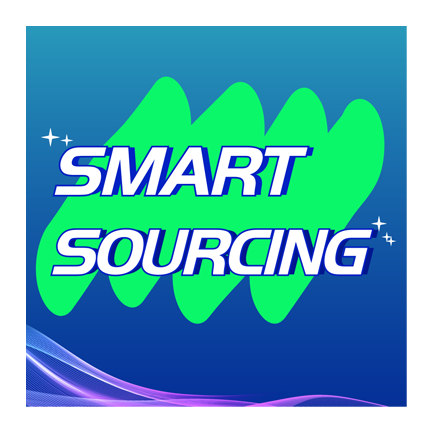
Smart Sourcing & Quality Assurance Content Team
Article by Smart Sourcing & Quality Assurance Content Team
The Smart Sourcing & Quality Assurance Content Team is dedicated to delivering high-quality, easy-to-understand information that empowers our audience to navigate the complexities of global sourcing and quality assurance. Our team of writers has extensive experience in creating content across various fields, including procurement, supply chain management, quality assurance, market trends, and industry best practices. We specialize in sectors such as apparel, textiles, and consumer goods, providing targeted insights to help businesses in these industries optimize their sourcing strategies, ensure product quality, and maintain a competitive edge in the market.
Grow your business with TradeAider Service
Click the button below to directly enter the TradeAider Service System. The simple steps from booking and payment to receiving reports are easy to operate.

